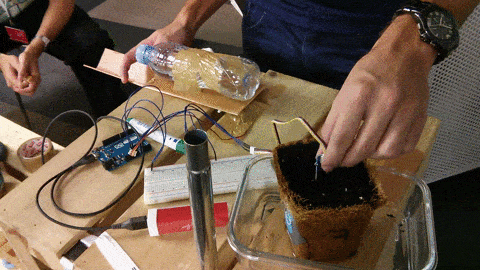We will all at some point have forgotten to water a plant. If we’re lucky then the limp vegetation we return to will magically revive when we rush to water it, if not then we have the shame of an empty plant pot to remind us of our folly.
No matter, you might be thinking, we can bring technology to bear on the problem, and automate it with a microcontroller! [Bonnie] has done just that, with a capacitive soil sensor feeding an ESP8266-based Adafruit Feather HUZZAH, which in turn logs soil humidity data with the Adafruit IO online service. An IFTTT applet monitors the data, and triggers a notification when moisture falls to the point at which watering is required.
The Instructables write-up gives a comprehensive step-by-step guide to the whole process, including the code, so it’s a project that almost anyone could try as well as a basic introduction to using an online service with a piece of hardware. We can’t help asking, though, whether it might have been better to have had the system do the watering rather than merely administer a prod to its fleshy horticulturist creator. Perhaps that’s left to anyone else building one to add as an enhancement.
Quite a few plant watering automation projects have found their way onto these pages over the years, from this one using car parts to a system with an impressively simple valve made by compressing a flexible pipe. The ultimate watering device though has to be this fully autonomous greenhouse robot.













